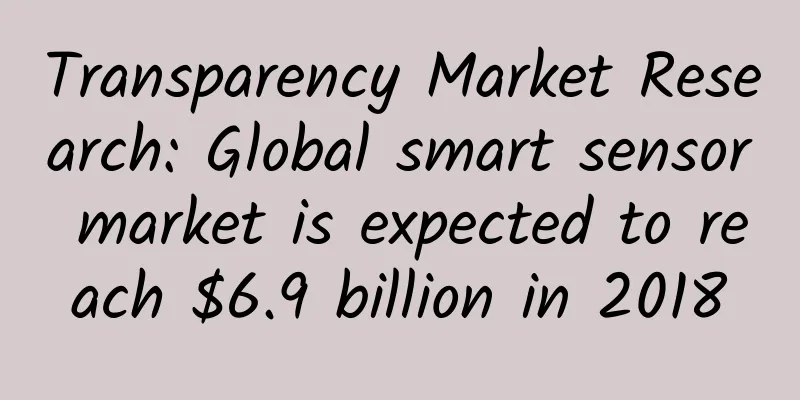Transparency Market Research: Global smart sensor market is expected to reach $6.9 billion in 2018

|
As the amount of data increases, the market for smart sensors with integrated processors will become an important development direction in the future. According to market research firm Transparency Market Research, the sales of such smart sensors may increase by 10% per year and is expected to reach US$6.9 billion by 2018. |
<<: Sutu Research Institute: Analysis of Android App Store Market in the First Half of 2013
>>: It turns out that eating also requires learning!
Recommend
Oriental Science Popularization | What should you do if you have heart failure?
Many patients with chronic cardiovascular disease...
Early symptoms of hyperthyroidism in women
Hyperthyroidism is a disease that causes great ha...
Laparoscopic surgery for blocked fallopian tubes
Nowadays, more and more people are suffering from...
How long after the angiography can I have a child?
Angiography is a test method used to check whethe...
Which axis of a mechanical keyboard feels the softest? What are the glare modes of a mechanical keyboard?
Nowadays, keyboards have become an essential prod...
Diet therapy for lobular hyperplasia of breast in girls
Lobular hyperplasia of the breast is a gynecologi...
Can I get pregnant if the follicle ruptures?
Normal ovulation of women is a prerequisite for e...
Once you are over this age, carotid artery plaque will come to you! Severe cases can cause stroke, so don't take it lightly!
During a routine annual physical examination, Ms....
What is the function of the range hood baffle? Who invented the range hood?
The origin of the range hood comes from the hood ...
How to maintain the uterus after abortion?
The uterus is a very important organ for women. I...
No need for thoracotomy! Minimally invasive intervention allows patients with pulmonary hypertension to breathe freely again
"I suddenly feel less stuffy in my chest, an...
Why HPV vaccine was suspended in Japan
Since the launch of the bivalent HPV vaccine in m...
What is the cause of high alanine aminotransferase in pregnant women?
Pregnancy is a special period for women, because ...
Is the habit of “rinsing mouth with tea” in “Dream of Red Mansions” good or bad?
□ Tong Yun Cao Xueqin wrote in Dream of the Red C...



![[Medical Q&A] Is the carbohydrate antigen 125 (CA125) test exclusive to women?](/upload/images/67f0fe425fca4.webp)





